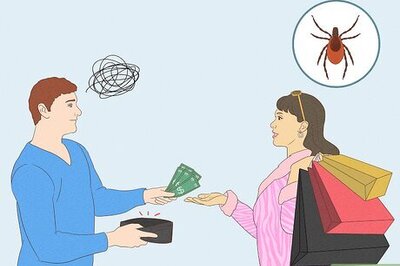
views
Two deaths were reported from the Kozhikode district in Kerala on Tuesday, bringing the nipah fear back to the state. Mansukh Mandaviya, the Union Minister of Health, confirmed that the Nipah virus was the cause of the deaths.
Four suspected instances, according to him, are currently being monitored, and the National Institute of Virology in Pune has received samples from them. This article examines past Nipah Virus (NiV) outbreaks in India, including the symptoms, modes of transmission, and potential preventative measures, as the Nipah panic returns to the state.
Nipah Virus Outbreaks
The viral infection was previously found in India five times in the past. Nipah is classified as a zoonotic virus by the National Centre for Disease Control, which means that it initially spreads between people and animals.
The fruit bat, also referred to as the flying fox, is the main animal host reservoir for Nipah. Fruit bats that have been infected with the virus can spread it to humans and other animals, including pigs. Infection in humans can happen when they come into touch with diseased animals or their bodily fluids, such as saliva and urine. This is known as a ‘spillover event’.
In past outbreaks:
- Siliguri, West Bengal, 2001.
- Nadia, West Bengal, 2007 (100% fatality).
- Kozhikode, Kerala, 2018 (17 deaths).
- Kochi, 2019 (student recovered).
- Pazhur, Kozhikode, 2021 (1 death).
- Recent cases in Kozhikode, Kerala, confirmed as Nipah (2 deaths)
How is Nipah Virus Transmitted?
The Nipah virus (NiV) can be transmitted to individuals by:
- Direct contact with diseased animals, like pigs or bats, or their bodily fluids (such blood, urine, or saliva),
- Consuming food items that have been tainted with an infected animal’s bodily fluids (such as fruit tainted with an infected bat’s juice or palm sap).
- Close contact with a NiV-positive individual or their bodily fluids (such as blood, urine, or droplets from the nose or mouth)
Signs and Symptoms
Nipah virus (NiV) infection can result in mild to severe illness, including brain swelling (encephalitis), and even death.
Typically, 4–14 days after a virus exposure, symptoms start to manifest. The illness usually includes symptoms of a respiratory illness, such as coughing, sore throat, and difficulty breathing, and typically begins with 3–14 days of fever and headache. Drowsiness, disorientation, and mental confusion are common symptoms of the ensuing phase of brain swelling (encephalitis), which can quickly develop to coma within 24-48 hours.
Initial symptoms could involve one or more of the following:
- Fever
- Headache
- Cough
- Sore throat
- Difficulty breathing
- Vomiting
Severe symptoms may follow, such as:
- Disorientation, drowsiness, or confusion
- Seizures
- Coma
- Brain swelling (encephalitis)
In 40–75% of instances, death may occur. Survivors of Nipah virus infection have reported long-term negative effects such as chronic convulsions and behavioural abnormalities. Dormant or latent infections, which manifest symptoms and can result in death much later after exposure, have also been documented months or even years later.
How to Prevent the Risk of Nipah Virus Infection?
Currently, there is no known treatment or cure for Nipah Virus. Consequently, healthcare professionals and doctors recommend taking essential precautions to safeguard against potential Nipah Virus exposure. Here are several preventive measures to reduce the risk of Nipah Virus transmission:
- Practice frequent handwashing to prevent germ-related infections.
- Avoid any physical contact with sick animals in your vicinity.
- Steer clear of trees or bushes that serve as natural habitats for bats.
- Refrain from consuming anything that might be contaminated.
- Do not consume fruits that exhibit signs of bat bites.
- Take measures to avoid contact with the saliva, blood, or any other bodily fluids of an infected individual.













Comments
0 comment